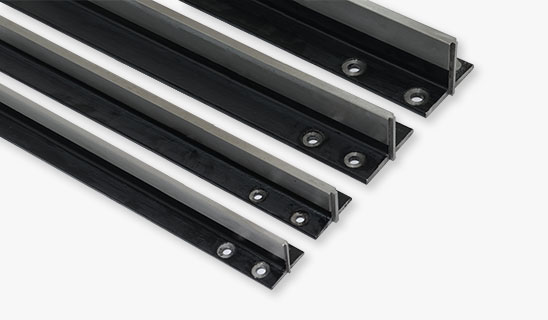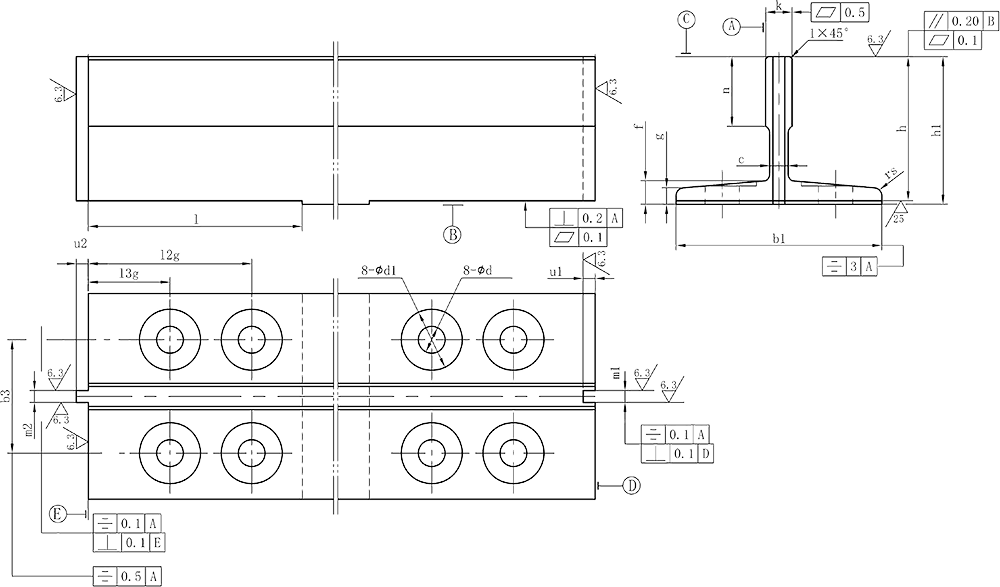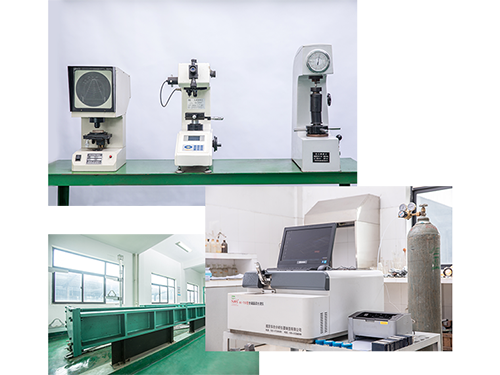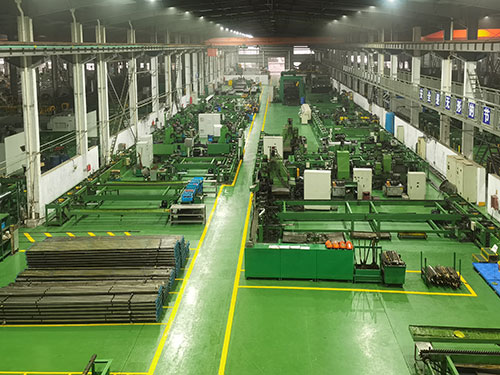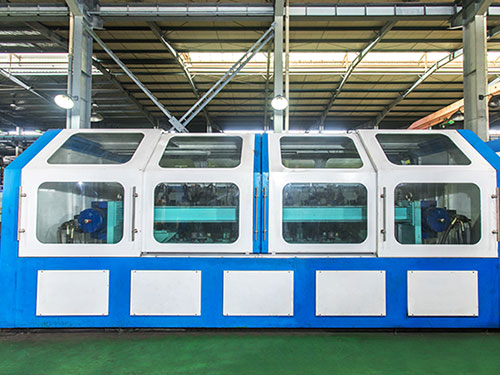Nosso Trilho de guia sólido tipo T para elevador é um componente de aço projetado com precisão projetado para movimento seguro e estável do carro do elevador e contrapeso ao longo do poço. Sua seção transversal sólida oferece rigidez superior, vibração reduzida e segurança aprimorada em aplicações de elevadores de passageiros e carga. Fabricados em conformidade com os padrões ISO7465 e ISO630, nossos trilhos-guia são usinados com altas tolerâncias para um desempenho consistente.
Temos padrões completos aqui. Sinta-se à vontade para encontrar o que precisa aqui.
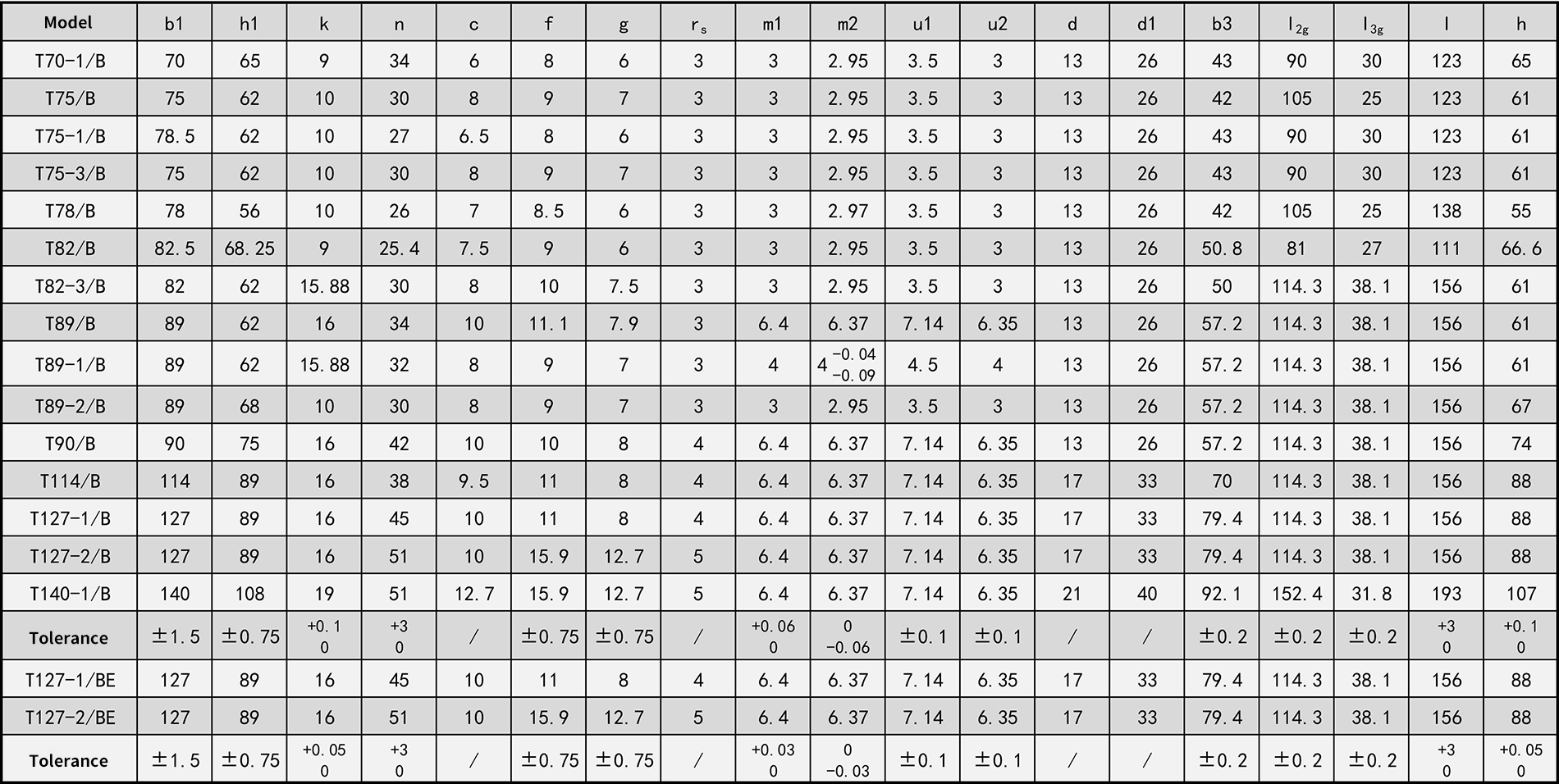
Para atender à experiência e às preocupações dos proprietários e passageiros, como os trilhos-guia mantêm baixa vibração e ruído em altas velocidades?
A primeira é controlar o tamanho com precisão.Depois que os materiais do trilho-guia são extrudados, ele precisa ser finalizado por retificadora CNC ou plaina CNC, com a tolerância controlada dentro de ±0,05 mm, para garantir a retidão e consistência da forma da seção transversal do trilho-guia na direção de comprimento total. Em seguida, use o laser tracker ou CMM para corrigir a posição relativa dos dois trilhos-guia para garantir que o erro paralelo entre eles seja <0,1 mm/m e o erro vertical seja do mesmo nível. Desta forma, quando o carro está subindo e descendo em alta velocidade, a força é simétrica e o desvio lateral causado pela folga irregular do trilho é reduzido.
Em seguida, é a preparação e lubrificação da superfície.Com base na fosfatação ou galvanização por imersão a quente, o revestimento eletroforético especial de baixo atrito ou o revestimento em micropó de politetrafluoretileno (PTFE) é aplicado para reduzir o coeficiente de atrito cinético entre a roda e o trilho para menos de 0,1. Equipado com um sistema de lubrificação que enche automaticamente a graxa de acordo com o número de vezes ou horas de operação, e o tipo de graxa é selecionado a partir de formulações antidesgaste de alta viscosidade para manter a integridade do filme de óleo e evitar "ruído de fricção seca" e microvibrações causadas pelo contato direto do metal.
Terceiro, sapata guia elástica com estrutura de amortecimento de vibração. As botas de aço tradicionais são propensas a ruídos e vibrações bruscos durante o deslizamento de metal com metal, enquanto as botas guia feitas de poliuretano ou nylon reforçado absorvem parte da energia do impacto através da própria elasticidade do material, atenuando significativamente a vibração e o ruído de alta frequência. Na conexão entre o trilho-guia e a parede do eixo, juntas de borracha ou blocos de amortecimento de vibração de plástico de engenharia são adicionados para dispersar a energia de vibração transferida para a estrutura do eixo e evitar a amplificação da ressonância.
Quarto, instalação precisa e ajuste dinâmico.Após a conclusão da instalação, o uso de projetor a laser para medições de alinhamento tridimensional, seção por seção ajustando os parafusos do suporte, para garantir que a linha do trilho guia se molde em todo o eixo sem pontos "acidentados" óbvios. Instalação de micro sensores de vibração na superfície do trilho-guia, juntamente com o sistema de aquisição de dados de operação do elevador, monitoramento em tempo real do espectro de vibração; Uma vez encontrada a tendência de aumento, o suporte pode ser ajustado ou a sapata guia pode ser substituída na próxima manutenção do tempo de inatividade.
Otimização de Buffer & Freio. Quando o carro atinge a parte superior ou inferior, o amortecedor de borracha flexível pode efetivamente absorver a energia do impacto final e reduzir a vibração de impulso transmitida à guia pela "aterrissagem forçada". Adotando o tipo de rolo ou freio com almofada macia, ele pode desacelerar por fricção suave ao cortar o acionamento, evitando a vibração dupla do grande impacto instantâneo no trilho guia e no carro.
A experiência de baixa vibração e ruído de andar no elevador não apenas aumenta o reconhecimento dos proprietários sobre a qualidade do projeto, mas também reduz os custos de manutenção causados por reclamações de ruído. É através da otimização de todo o processo, desde o material, processamento, lubrificação, amortecimento de vibrações, instalação até a coordenação do sistema, que a guia pode realmente atingir um nível "sem sentido" de suavidade e silêncio ao funcionar em alta velocidade.
De acordo com as normas internacionais: ISO7465:2007; ISO630: 2021. De acordo com os padrões internacionais, realize testes abrangentes de matérias-primas com base na certificação de materiais fornecida pelos fornecedores para garantir que a qualidade de cada lote de matérias-primas atenda aos requisitos.
Configure duas linhas de produção automatizadas de trilhos-guia. O equipamento deve garantir que os itens produzidos cumpram ou excedam os requisitos do cliente, mantendo a estabilidade da retidão, distorção e rugosidade da superfície
Dados os rigorosos requisitos de retidão e torção nas guias de grau BE, foram implementados equipamentos especializados de endireitamento automático e correção de torção, juntamente com sistemas avançados de detecção. A retidão é mantida dentro de 0,5 mm, enquanto a torção é controlada dentro de 30' por metro
O conceito de serviço de "cliente em primeiro lugar" afirma que, independentemente de onde nossos serviços são prestados - seja dentro da empresa, no local de trabalho do cliente, no canteiro de obras ou durante o transporte - nosso objetivo principal continua sendo satisfazer o cliente
